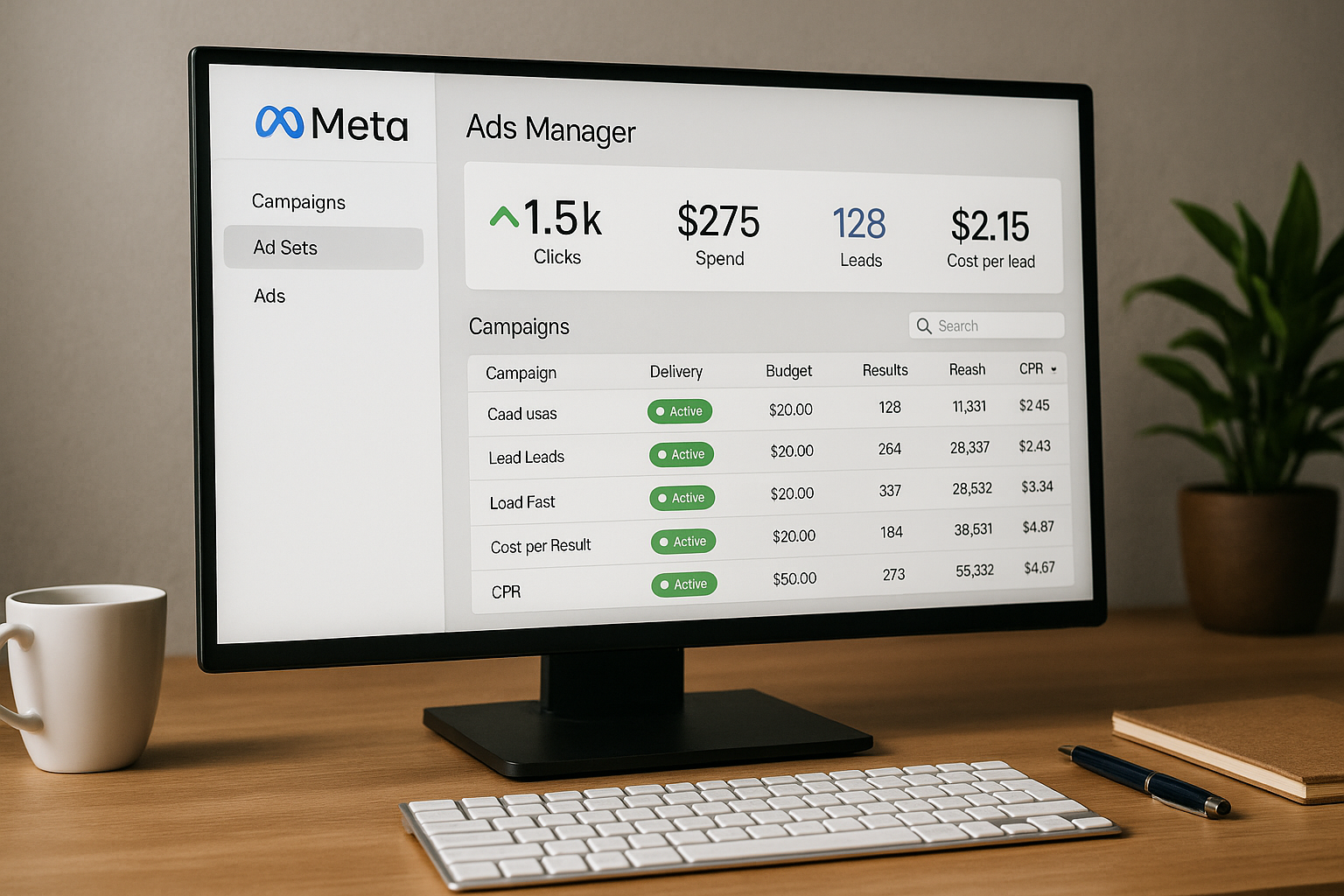Meta Ads — formerly Facebook Ads — is still one of the most powerful advertising platforms in digital marketing. Whether you’re managing ads for your own business or for clients, understanding how to use Meta Ads properly is essential for success as a traffic manager.
In this guide, you’ll learn step-by-step how to set up and optimize Meta Ads campaigns to attract more clients, drive results, and scale your digital marketing strategy.
What Are Meta Ads?
Meta Ads allows businesses to run paid ads across:
Facebook News Feed
Instagram Feed
Facebook and Instagram Stories
Reels
Messenger
Audience Network (external apps and sites)
It offers advanced targeting, budgeting, creative, and reporting tools — all inside the Meta Ads Manager platform.
Why Use Meta Ads to Get Clients?
Meta Ads is ideal for client acquisition because:
It has billions of active users across Facebook and Instagram
The targeting options are incredibly precise
The ad formats are visual, mobile-friendly, and engaging
It works for local businesses, e-commerce, digital products, and services
You can start with a low budget and scale as you learn
Step 1: Set Clear Goals
Before launching any campaign, ask: What’s the goal?
Here are some common client-getting objectives:
Generate leads for a service business
Book appointments or consultations
Sell a product or digital offer
Build a list of qualified prospects
Choose a campaign objective inside Meta Ads Manager that matches your goal. For client attraction, these are the most common:
Leads (lead forms or website conversions)
Traffic (to a website or landing page)
Messages (via Messenger or WhatsApp)
Conversions (tracked through Meta Pixel)
Step 2: Choose the Right Target Audience
Targeting is where Meta Ads really shines.
You can create custom audiences based on:
Demographics: age, gender, location
Interests: business, coaching, fitness, real estate, etc.
Behaviors: frequent buyers, ad clickers, etc.
Custom audiences: people who visited your site, engaged with your content
Lookalike audiences: Meta finds similar people based on your best audience
Pro tip:
If you already have a few customers or followers, create a lookalike audience based on those people — it’s one of the most powerful tools for client acquisition.
Step 3: Create Compelling Creatives
Your ad creative (image or video) is what grabs attention.
Here’s how to make great creatives for client-getting ads:
For Service Businesses:
Use testimonial videos or case studies
Show before-and-after results
Include a clear CTA (e.g., “Book Now”)
For Freelancers or Agencies:
Show portfolio pieces or successful campaigns
Include a headline like “Want More Leads Like These?”
Use personal branding (your face builds trust)
General Tips:
Keep text short and clear
Use vertical videos for Stories and Reels
Highlight the benefit, not just the feature
Use captions — many people watch on mute
Step 4: Write High-Converting Ad Copy
Your ad copy should follow a proven structure:
- Hook – Grab attention right away
- Problem – Describe the pain point of your audience
- Solution – Present your service or offer
- Social proof – Mention a result, client win, or case study
- CTA – Tell people what to do (Click, Book, Message)
Example:
“Tired of running ads that don’t convert? I help local businesses like yours get more qualified leads using simple traffic strategies. Book a free discovery call today.”
Step 5: Design a Landing Page or Lead Form
Where will users go when they click your ad?
Option 1: Meta Lead Form
Easy to set up
No website needed
Autofills user info
Option 2: Landing Page
More control over design
Good for showcasing more info
Great if you want email follow-up and tracking
Make sure your page includes:
A clear headline
Social proof
Short description of your offer
Easy form or booking button
Mobile responsiveness
Step 6: Install the Meta Pixel
If you want to track conversions and optimize your campaigns, you need to install the Meta Pixel on your landing page.
The pixel allows you to:
Measure how many people took action
Create custom and lookalike audiences
Optimize your ads for leads, purchases, etc.
Use Google Tag Manager or insert the code manually on your site.
Step 7: Budgeting and Bidding
Start small while testing.
Suggested daily budget: $5–$15 per ad set
Choose a conversion or lead objective
Let the campaign run at least 3–5 days before making changes
Use automatic bidding as a beginner
Once you find a winning audience + creative + copy combo, you can scale by increasing your budget or duplicating ad sets.
Step 8: Analyze and Optimize
Meta Ads Manager provides deep performance data. Track:
Cost per Result (CPR)
CTR (Click-Through Rate)
Impressions and Reach
Conversion Rate
Relevance Score
Turn off underperforming ads and double down on what works. Try A/B testing new images, copy, or audiences every week.
Final Tips for Attracting Clients with Meta Ads
Start with your own services if you’re a freelancer or agency
Test locally if you’re promoting services in a specific area
Use lead magnets (free guides, checklists) to capture emails
Always follow up with leads — email or DM them within 24 hours
Don’t expect instant results — test and learn as you go
Conclusion: Start Small, Grow Big
Meta Ads remains one of the best platforms to attract clients in any niche. You don’t need a huge budget, but you do need strategy, testing, and consistency.
Once you master the platform, you can deliver amazing results for your clients — and charge premium prices for your expertise.
